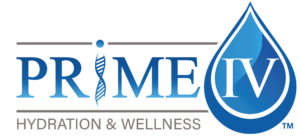Enjoy a limited-time welcome discount on your first visit!
Offers vary by location.
Enjoy a limited-time welcome discount on your first visit!
Offers vary by location.

If you aim to become stronger without adding much muscle mass, it’s entirely possible with the right approach to your training. To understand the key principles behind building strength without size, we need to differentiate between training to build muscle and training for maximal strength.
Hypertrophy training focuses on building as much muscle mass as possible and is commonly used by bodybuilders and those seeking aesthetic gains. The typical repetition range in this training style is 8-12 reps per set, emphasizing the “time under tension” and total weight lifted. Rest periods are shorter, and the overall volume of weight lifted is higher.
Related Link: The Best Immune Booster IV Therapy Near You
Training for maximal strength aims to increase strength while maintaining muscle size. It is not about packing on muscle mass but rather improving the strength of existing muscles. Training for strength involves contracting all muscle fibers simultaneously to lift the heaviest weight for a single repetition. While muscle gain can still occur, the focus is on minimizing hypertrophy by reducing time under tension and total load lifted during each session.
Looking for an IV therapy business near you? Find a location near you today.
Opt for compound lifts over isolation exercises when training for maximal strength. Compound lifts engage multiple joints and muscle groups simultaneously, mimicking natural movements. Exercises like squats, deadlifts, and heavy carries train your body to function as a unit and improve overall functional strength. While isolation exercises have their place, prioritize compound movements in your training program to build strength without significant muscle gain.
Lifting heavy weights to develop maximum strength, targeting at least 85% of your 1-repetition maximum (1 RM), which represents the maximum weight you can lift for one repetition, allows you to progressively challenge your muscles and enhance overall performance; to avoid injury, use indirect methods or experienced spotters to accurately assess your 1-rep max and ensure a safe and effective strength training routine, as lower rep ranges with heavy weights stimulate the nervous system, leading to improved strength gains without excessive muscle growth. Furthermore, incorporating heavy weights into your strength training regimen not only allows you to progressively challenge your muscles and enhance overall performance, but it also helps to build a solid foundation of strength, making it easier to handle higher loads in the future and further contributing to improved strength gains without excessive muscle growth.
For strength training, longer rest periods between sets are essential to replenish ATP and creatine stores. ATP (Adenosine Triphosphate) is the body’s energy currency, and weightlifting depletes ATP and creatine stores rapidly. Resting for 3-5 minutes allows your body to replenish ATP, enabling you to lift heavier weights in subsequent sets. Longer rest periods optimize strength development, while shorter rest periods are more typical in hypertrophy training.
By following the principles mentioned, you can undoubtedly build strength without significant muscle gain. However, there is a limit to how much strength can be gained without increasing muscle mass. At some point, to continue progressing in strength, increasing muscle size becomes inevitable. Even powerlifters, who focus on maximal strength rather than muscle size, go through hypertrophy phases to enhance their strength potential. Remember that muscle is essential for health and longevity, so instead of aiming for as little muscle mass as possible, focus on building functional strength and overall well-being.
Related Link: Peptide Hormones: Benefits and Examples
IV therapy has gained popularity in recent years as a means to enhance various aspects of health and performance, including muscle strength. While it is not a direct method for building strength, IV therapy can be a valuable complement to your training regimen. Here’s how it can benefit your strength-building efforts:
Want to improve your health with IV therapy? Book your appointment today.
Though IV therapy complements your strength-building journey, it does not replace proper training and nutrition. Its benefits lie in optimizing nutrient delivery, improving hydration, reducing muscle fatigue, and supporting overall recovery, all of which contribute to more effective progress toward your strength goals. Remember to consult with a healthcare professional to assess if IV therapy aligns with your individual needs and objectives.
Related Link: The Best Vitamin C Infusion Near You